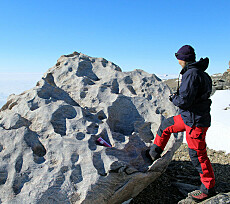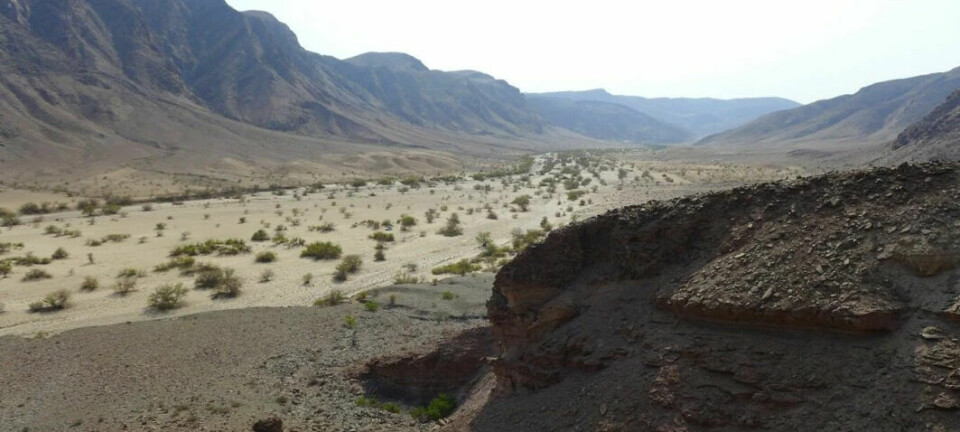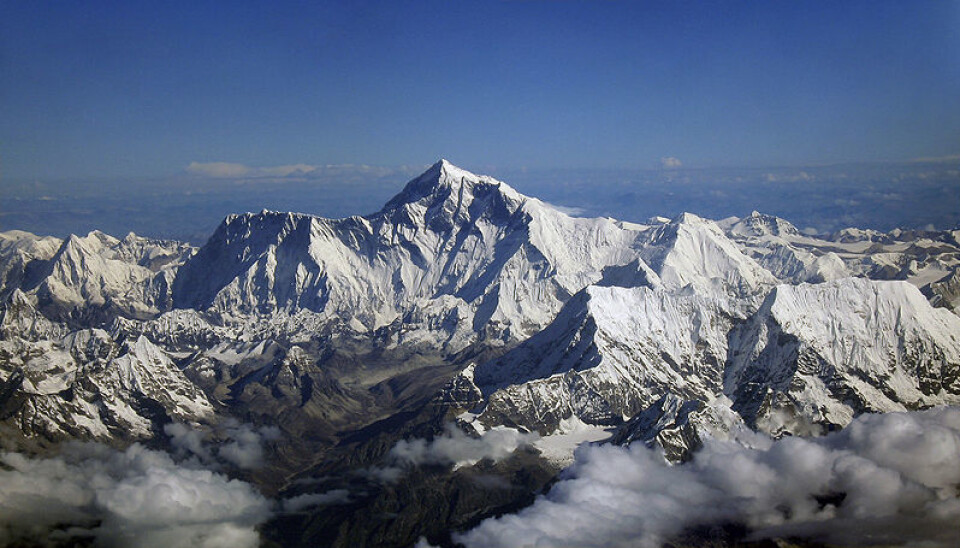
Why can't mountains on Earth get much higher than the ones that are here now?
If you've ever wondered why there are no mountains higher than Mount Everest, you can find the answer here. But there are mountains of completely different sizes elsewhere in the solar system.
The highest mountains on Earth tower almost 9,000 metres above sea level, and are all on the Tibetan Plateau in Asia — in the Himalaya and Karakoram mountain ranges.
The most famous are Mount Everest (also called Chomolungma), K2 and Lhotse.
“Mountains can’t get much higher than those that exist now,” Haakon Fossen said to sciencenorway.no.
Fossen is a professor of geology at the University of Bergen, and sciencenorway.no has interviewed him about high mountains on Earth and in the rest of the solar system.
As humans have sent out probes and mapped the surface of other planets, these spacecrafts have identified huge mountain peaks in our own solar system — at least compared to what we have on Earth.
There are several types of mountains. Some are volcanoes, while others are mountains that form as plates in the crust push and collide with each other.
And there are some natural rules that govern how high mountains on Earth and other planets can be, Fossen said.
Mountains are pressed down and built up
There are two important factors in particular that affect how high mountains can be on Earth, Fossen said.
- The first is the Earth’s gravity, which constantly pushes everything down.
- The second is the strength of the Earth's crust under the mountains.
The Earth's surface consists of relatively thin plates that float on top of the mantle — the hot rock that lies beneath. The mantle is semi-solid — at least when you look at it from a geological time scale, where it behaves like a viscous fluid.
Although there are several types of mountains, the highest mountains on Earth are formed when the Earth’s continental plates collide with each other.
The Himalayas are a dramatic example of how mountains on Earth are formed. About 40-50 million years ago, the Indian plate began to crash into the Eurasian plate, and the Himalayan mountains shot up.
But at some point, mountains cannot grow any taller, even if the collision continues, according to the Vox news website.
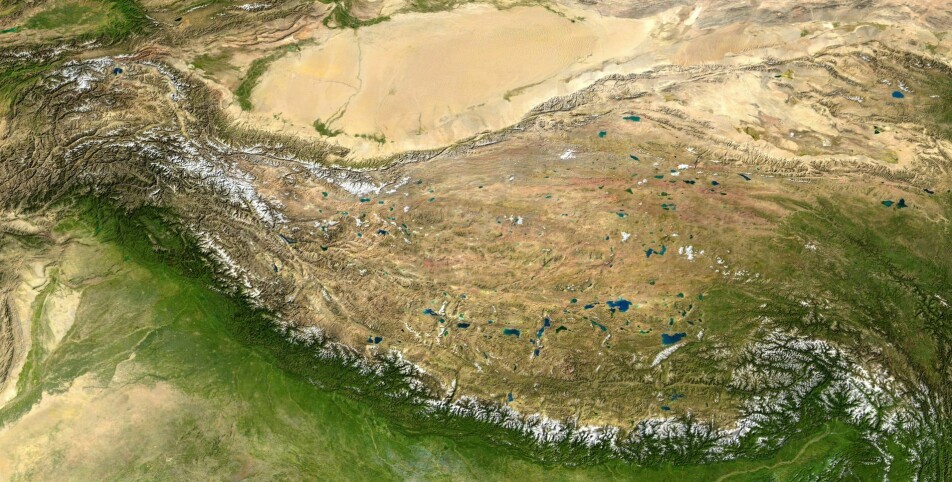
The equilibrium
“It is easier to create high mountains during the first 15-20 million years of the collision,” Fossen said.
But at some point they almost stop growing. Deep underneath the mountains that are pushed up, the Earth's crust is being pushed down and heated — both from the underside and from radioactive substances inside the rock itself.
The heating makes the deep parts of the mountain softer, at the same time as gravity is pushing everything down.
“Eventually it starts to collapse — much like when you put yeasted pastry dough on a table,” he said.
The forces that form and shape the mountains reach an equilibrium — the forces in the collision cause the mountains to grow, at the same time as the Earth's crust underneath the heavy mountains softens, melts and "flows" outwards — because the mountains are pressed down by gravity. The mountains are also shaped and eroded by weather, wind, rivers and ice.
Geological surveys of the Tibetan Plateau show that this height limit — the equilibrium height — is around 5,000 metres above sea level on average, Fossen said. There are individual mountains that are much higher than this, but this is the average.
“You can get local peaks like Mount Everest that rise above this equilibrium height, but it’s not representative of the average,” he said.
Consequently, local, random differences help determine how high a mountain can be, such as rock types, rainfall, support from the surrounding plateau and other local variations. But it is unlikely that there have ever been mountains that are higher than the highest peaks that exist now, Fossen said.
But these are the conditions on Earth. Other planets have completely different physical parameters, which also results in completely different mountain heights.

Volcano and mountain?
There is no clear definition of what a mountain is, Fossen said to sciencenorway.no.
What is often referred to as the highest mountain in the solar system is Olympus Mons on Mars. This is a volcano that is about 22 kilometres high. The peak is named after the home of the gods in Greek mythology — Olympus.
This soaring volcano was able to be created on Mars due to the special conditions on Mars itself.
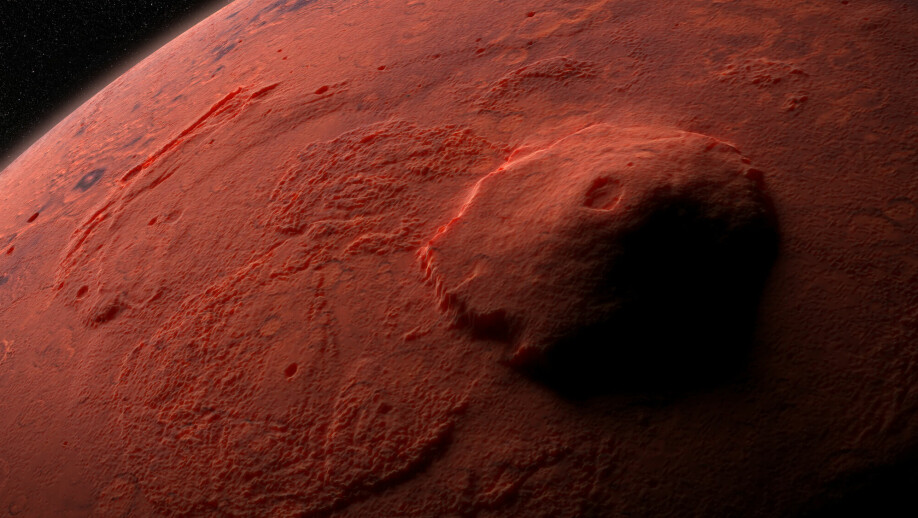
First, Mars has much lower gravity than Earth, only about 38 per cent of what is found here, according to NASA. This means the forces that limit mountain growth are weaker, and mountains can theoretically become much higher than on Earth.
But Olympus Mons is an extinct volcano and came into existence quite differently from the tectonic processes that created the Tibetan Plateau, home of the Himalayas. It formed more than three billion years ago, according to this study in the journal JGR Planets.
When Olympus Mons formed, Mars was a geologically active planet. The volcano was formed by magma from the planet's interior, which may have pushed up through the crust and built up the volcano over a very long time, Fossen said.
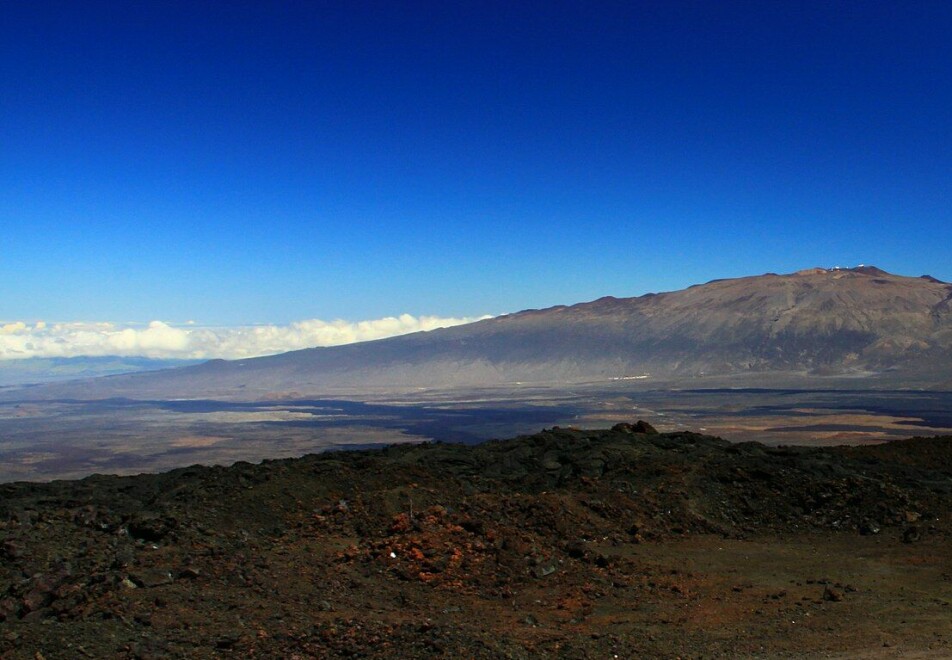
Earth is also home to some very high volcanoes. Among the largest is Mauna Kea in Hawaii, which is over 4,200 metres above sea level. If you measure the volcano’s height from the seabed, Mauna Kea is 10,000 metres from bottom to top.
Depending upon the criteria you use to judge heights, Mauna Kea can also be considered the world's highest mountain, according to Business Insider.
But Mauna Kea lies on a plate that "floats" on the mantle below. Beneath the plate is a plume of heat where magma is lifted to the surface. This plume of heat is fixed in the same place, while the plate floats on top and moves.
Since the plate moves over this plume of heat, the magma comes to the surface in different places over geological time. You can see this off Hawaii, where there is a line of islands and seamounts that have been created over a long period. The magma finds new ways out of the mantle over the course of many millions of years, which is clearly visible on the map below.
But no evidence of tectonic plates has ever been found on Mars. It seems as if Olympus Mons has been able to grow bigger and bigger because it has remained in one place.
Giant mountain
There are also examples of mountains in the solar system that are far larger than those found here on Earth — which may have been created by volcanic processes.
It is uncertain whether there is anything similar to the Earth’s plate tectonics on other planets in the solar system, according to the EarthSky website.
But there are several places in the solar system where mountains form. One such world is the moon Io, which orbits the giant planet Jupiter. The moon has been photographed by several probes, although no probe has ever landed there.

It does appear that the moon is very volcanically active, and scientists have proposed theories about what is happening on Io, one of which is described in this study in the journal Nature Geoscience from 2017.
Io has very high, characteristic mountains that rise many kilometres straight up from the plains. The highest mountain is called Boösaule Montes and can be as high as 18 kilometres in elevation.
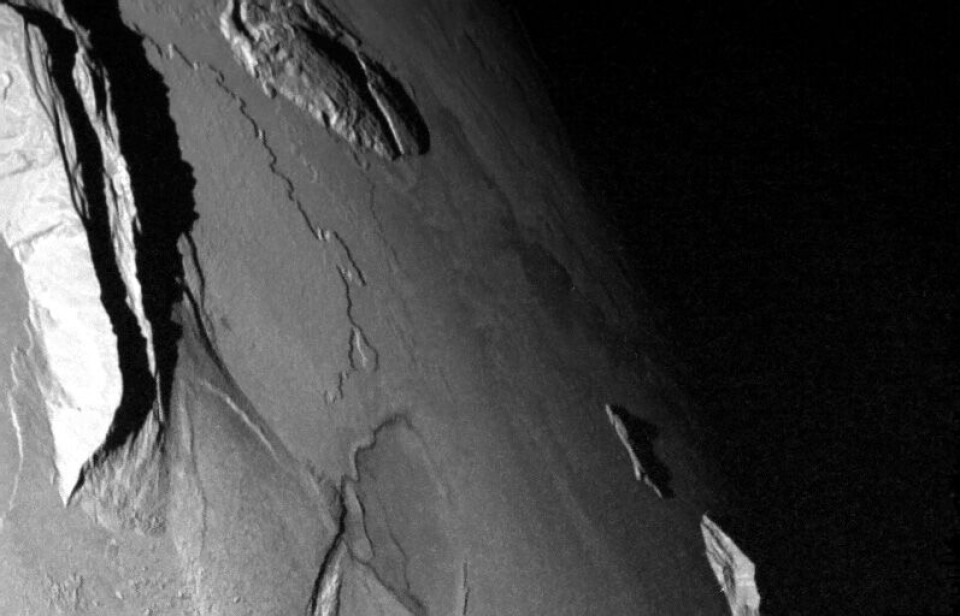
An important point is that Io has much less gravity than both Earth and Mars, with gravity that is just 18 per cent of the Earth's.
The mountains on Io have different shapes and have been compared to large slabs of rock that have been flipped on their side and pushed up by the crust, according to researchers behind this survey from the journal JGR planets. The researchers believe that the mountains resemble what are called flatiron formations found in some mountainous areas on Earth.
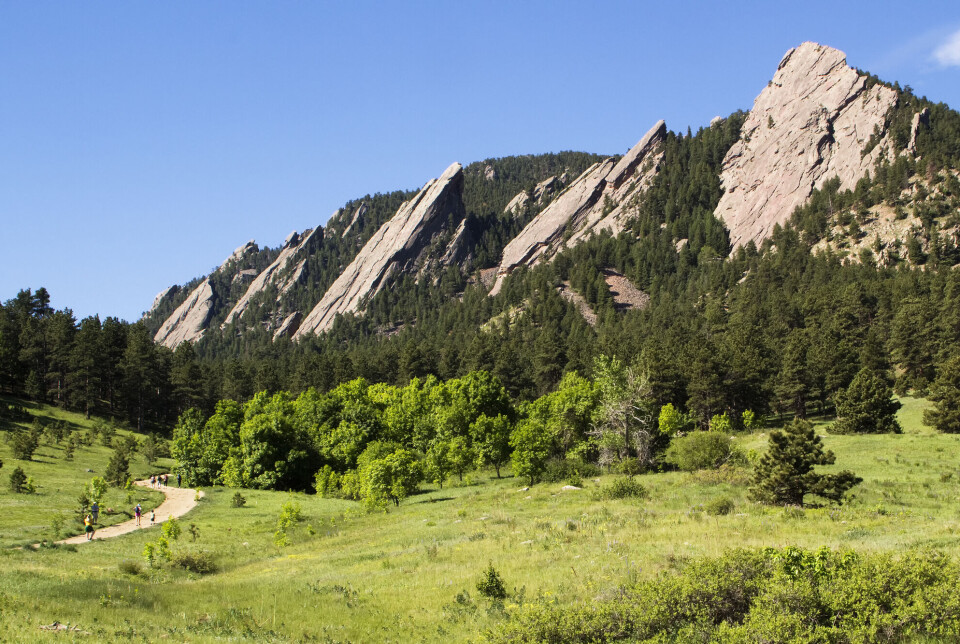
Exactly what processes are responsible for Io’s mountains are unknown, but one theory suggests that Io’s innards are spewed out by volcanoes in such large quantities that there is less and less matter under the crust.
This causes the crust to shrink and crack open, causing large blocks to be thrust up from the crust, according to Ars Technica.
Translated by Nancy Bazilchuk
This article was updated on 28 October - the word magma was corrected to hot mantle in the caption under the illustration of the boundary between two tectonic plates.
———
Read the Norwegian version of this article at forskning.no
------









